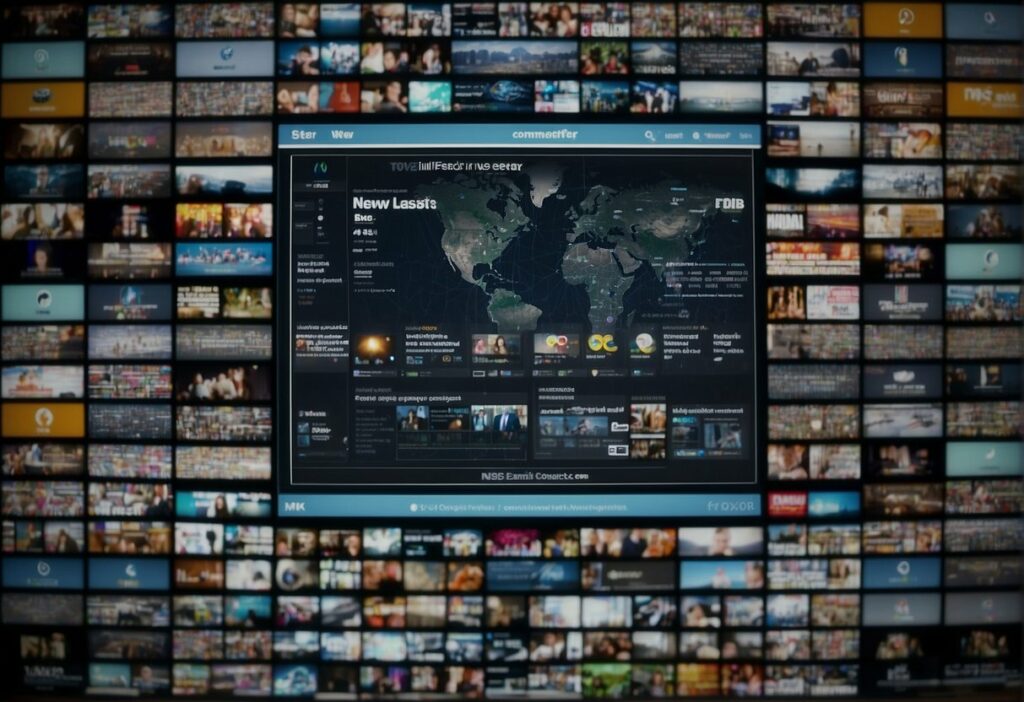How Newsfeed Algorithms Affect Our Emotions and Political Views: Unveiling the Impact on Public Discourse

Newsfeed algorithms, the sophisticated and often opaque systems that determine which content users see on social media platforms, play a significant role in shaping user experience.
By analyzing vast amounts of data, these algorithms curate personalized streams of content designed to engage users. However, the way they prioritize certain types of news and information can also significantly influence users’ emotions, potentially reinforcing existing beliefs and biases.
The emotional impact of newsfeed algorithms is multifaceted. On one hand, they can create echo chambers, environments where one’s beliefs are amplified by repeated exposure to similar viewpoints, leading to an emotional sense of validation and belonging.
The Role of Newsfeed Algorithms

Newsfeed algorithms determine what content users see on their social media platforms, shaping their emotional responses and influencing their political perspectives.
Definition and Function
Newsfeed algorithms are complex systems that curate and prioritize content in a user’s social media feed based on various factors, such as user behavior, relationships, and preferences. The primary function of these algorithms is to enhance user engagement by presenting content they are more likely to interact with, whether through likes, shares, or comments.
- Key factors considered by newsfeed algorithms include:
- User interaction with posts, people, pages, and groups
- The type of content (e.g., video, image, text)
- Recency of the post
- Relationships between the content creator and the user
Evolution and Development
Newsfeed algorithms have evolved from simple chronological feeds to highly sophisticated systems that employ artificial intelligence and machine learning. These advances allow platforms to deliver hyper-personalized content experiences.
- Timeline of development:
- Early 2000s: Feeds largely chronological
- Mid to late 2000s: Introduction of basic algorithms prioritizing popular content
- 2010s: Integration of machine learning for deeper personalization
- 2020s and beyond: Continuous refinement and complexity, including predictive analytics
As newsfeed algorithms have developed, they have become a critical factor in the distribution of information online and therefore a significant influence on public discourse and individual belief systems.
Emotional Impact of Newsfeeds

Algorithms governing newsfeeds play a significant role in influencing the emotions of their users. These algorithms are designed to curate content tailored to individual preferences, often reinforcing users’ existing emotions and opinions.
Psychological Effects
The design of newsfeed algorithms can lead to emotional reinforcement. Users frequently encounter information that aligns with their existing beliefs and sentiments, which can intensify their emotional responses. For example, someone who expresses interest in positive stories may be shown more uplifting content, potentially amplifying feelings of happiness and contentment.
On the other hand, negative emotions can also be exacerbated. Exposure to content that triggers fear or anger can lead to a cycle of negative feedback, where users are continually presented with alarming or infuriating topics, thus maintaining or increasing these emotional states.
Sentiment Shaping
Newsfeeds have the power to shape sentiments regarding social and political matters. When users are exposed to a high volume of content with a similar tone or perspective, their attitudes towards certain topics can shift, subtly molding their political views over time.
- Echo chambers: Users often find themselves in environments where only like-minded opinions are presented, reducing exposure to alternative viewpoints and potentially leading to more extreme positions.
- Emotional contagion: Emotions can spread through networks as users interact with content, leading to shared emotional responses among groups of people. For instance, a prevalent sense of outrage over an issue can be amplified as more people engage with and disseminate content expressing indignation.
Algorithms and Political Polarization

Newsfeed algorithms can significantly influence political polarization by shaping what content users see online. This tailored content can reinforce existing beliefs or introduce users to more extreme viewpoints.
Filter Bubbles
Filter bubbles occur when algorithms selectively display content that aligns with a user’s existing beliefs and interests. This can lead to a scenario where users encounter a narrow range of perspectives. For instance:
- Content Selection: A social media platform may show articles from outlets that predominantly align with a user’s political leanings.
- Impact on Perception: Users may perceive their views as more widely accepted than they are, due to the frequency of similar viewpoints.
Echo Chambers
Echo chambers describe an environment where users encounter opinions and beliefs that echo their own, reinforcing their existing worldviews. Examples of how echo chambers manifest online include:
- User Interaction: If individuals frequently engage with content that supports their views, the algorithms will likely serve more of such content.
- Community Formation: Groups and pages that cater to specific ideologies can create insulated spaces where dissenting opinions are rare.
Strategies for Mitigating Bias

In addressing the influence of newsfeed algorithms, strategies must involve both individual awareness and platform accountability to ensure a balanced flow of information.
Individual Approaches
People can take proactive steps to assess and influence their digital information landscape.
- Diversification: Users should intentionally follow a variety of news sources, including those with different political perspectives.
- Critical Thinking: They should practice critical analysis of content, questioning the motives behind sensational headlines or emotional appeals.
Platform Responsibilities
Social media platforms play a crucial role in curating content for users, with a responsibility to mitigate bias.
- Transparency: Platforms should provide clear explanations of how their algorithms function and the types of content they promote.
- Algorithmic Changes: Incorporating options that allow users to customize their newsfeed algorithm based on diverse perspectives rather than engagement metrics.
Evolving Landscape of Social Media

The social media landscape is continuously transforming, driven by technological advancements and user behavior changes.
Future Predictions
Social media platforms are expected to leverage emerging technologies such as artificial intelligence (AI) and virtual reality (VR) to enhance user experience. AI could curate feed content with unprecedented personalization, while VR might create immersive environments for interaction. Other predictions include increased use of ephemeral content, like stories that disappear after a certain period, and the growth of platforms that prioritize user privacy and data security.
- AI and VR Integration
- Ephemeral Content
- Privacy-centric Platforms
Regulatory Considerations
Governments and regulatory bodies are increasingly scrutinizing social media platforms. They may impose new regulations aimed at transparency in algorithms, protection of user data, and prevention of misinformation. The balance between regulation and innovation will be crucial, as heavy-handed policies might stifle growth while lax regulation could fail to protect users.
- Algorithm Transparency
- Data Protection
- Misinformation Containment
Governments may employ tables such as:
| Region | Regulatory Focus | Potential Impact on Platforms |
|---|---|---|
| EU | Digital Services Act | Stricter content moderation |
| US | Section 230 Amendment | Liability for user-generated content |
| Asia | Data Localization Requirements | Increased operational complexity |
Social media companies can respond to these regulatory changes through policy adjustments, technical measures, and community guidelines.
